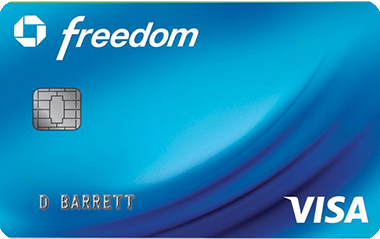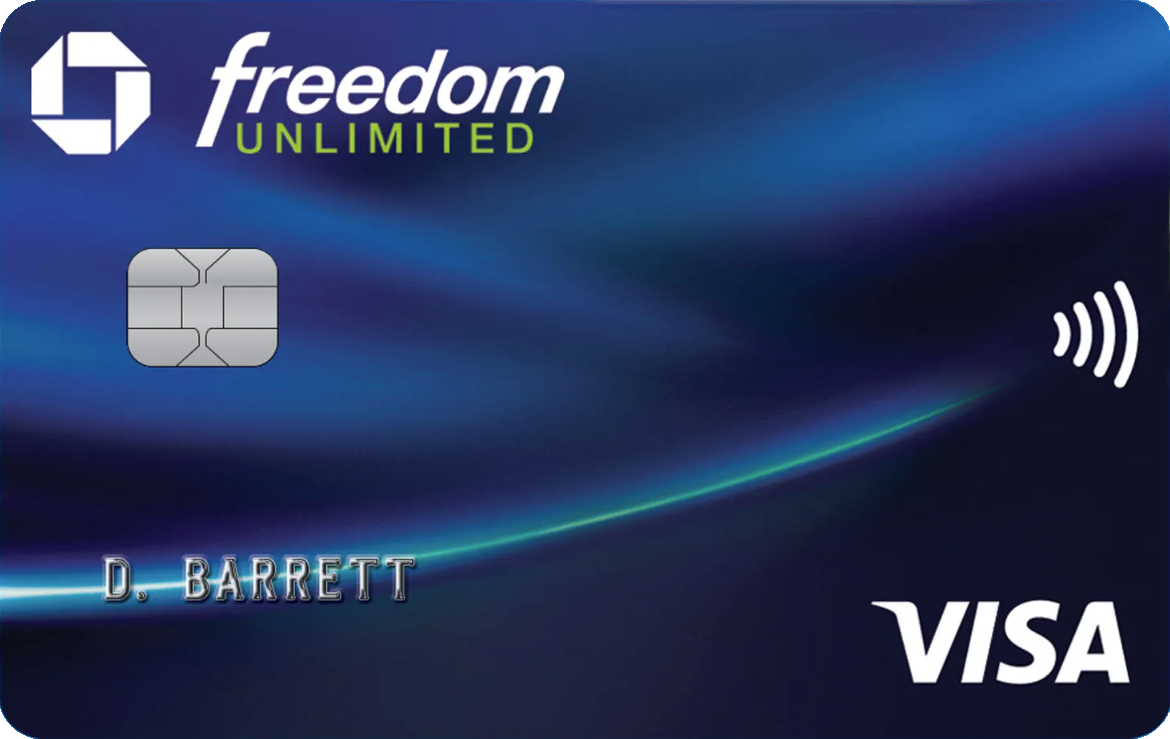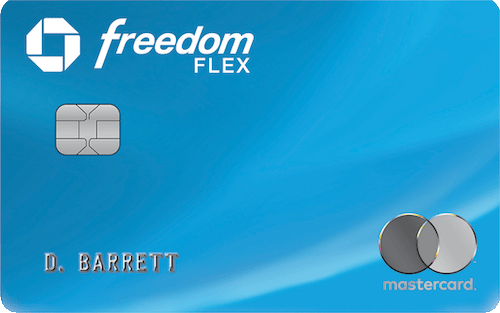The Chase Freedom Trilogy
A Complete Guide to No-Fee Earning Power in the Ultimate Rewards Ecosystem
What better time to discuss freedom than Independence Day? Not political freedom, but financial freedom through the Chase Freedom card family—three distinct cards that collectively represent one of the most compelling no-annual-fee earning opportunities in the credit card ecosystem. While most zero-fee cards force you to choose between decent signup bonuses or strong earning potential, the Freedom trilogy delivers both, creating a foundation that can generate thousands in annual value when properly orchestrated within the Ultimate Rewards system.



The Chase Freedom card family offers an extraordinary no-annual-fee earning opportunity through three distinct cards: the quarterly category-focused Freedom Flex, the everything-else specialist Freedom Unlimited, and the legacy Freedom available only through downgrades. With current $200 signup bonuses, 5% earnings on rotating quarterly categories, and seamless integration with premium Chase travel cards, these cards can anchor a sophisticated points strategy. The key insight: combining multiple Freedom cards can push quarterly spending caps to $3,000 or more, transforming seasonal promotions into year-round earning engines that rival premium cards at a fraction of the cost.
Card Overview
The Chase Freedom ecosystem represents a masterclass in product differentiation within a cohesive rewards structure. Rather than competing against each other, these three cards work synergistically to create comprehensive spending coverage while maintaining the flexibility of Ultimate Rewards points.
Key Card Features
Chase Freedom Flex
- Sign-Up Bonus: $200 cash back (20,000 Ultimate Rewards points) after spending $500 in the first three months
- Annual Fee: $0 permanently
- Foreign Transaction Fees: None
- Travel Portal Access: Yes, 5x points on airfare, hotels, and car rentals through Chase Ultimate Rewards
- Transfer Partners: Access requires pairing with Chase Sapphire Preferred, Reserve, or Ink Business Preferred
Chase Freedom Unlimited
- Sign-Up Bonus: $200 cash back (20,000 Ultimate Rewards points) after spending $500 in the first three months
- Annual Fee: $0 permanently
- Foreign Transaction Fees: None
- Travel Portal Access: Yes, 5x points on airfare, hotels, and car rentals through Chase Ultimate Rewards
- Transfer Partners: Access requires pairing with premium Chase card
Chase Freedom (Legacy)
- Sign-Up Bonus: Not available—accessible only through product downgrades
- Annual Fee: $0 permanently
- Foreign Transaction Fees: None
- Travel Portal Access: No—points can only be redeemed for cash or gift cards at 1 cent per point
- Transfer Partners: Access requires pairing with premium Chase card
Spending Categories: The Quarterly Category System Explained
The cornerstone of the Freedom earning strategy lies in understanding how Chase's quarterly category system operates—and why the marketing language can be misleading.
The "5% vs. 1x + 4x" Clarification
Chase markets these cards as earning "5% cash back" on quarterly categories, but the technical reality reveals additional earning opportunities. The cards actually provide:
- 1x points on all purchases (baseline earning)
- Additional 4x points (promotional bonus) on designated quarterly categories
This distinction matters significantly when quarterly categories overlap with permanent earning categories. For example, during Q2 2024's dining promotion, the Freedom Flex delivered:
- 7x total points on dining (3x permanent rate + 4x quarterly bonus)
- 5x total points on Amazon.com (1x baseline + 4x quarterly bonus)
2024-2025 Quarterly Category Calendar
Q1 2024: Grocery stores (excluding Walmart and Target), fitness clubs and gym memberships, self-care and spa services
Q2 2024: Amazon.com, hotels, and restaurants
Q3 2024: Gas stations, EV charging stations, select live entertainment, and movie theaters
Q4 2024: Chase Travel℠, department stores, and Old Navy
Q4 2025 (Current): Instacart, gas stations, EV charging stations, and select live entertainment
Critical Limitation: All quarterly categories are capped at $1,500 in combined spending per quarter, yielding a maximum of $75 in cash back (or 7,500 Ultimate Rewards points) per card quarterly.
Freedom Flex Permanent Categories
Beyond quarterly promotions, the Freedom Flex maintains consistent elevated earning rates:
- 5x points on airfare booked through Chase Ultimate Rewards
- 5x points on hotels booked through Chase Ultimate Rewards
- 5x points on car rentals booked through Chase Ultimate Rewards
- 3x points on dining at restaurants
- 3x points on drugstore purchases
- 1x points on all other purchases
Freedom Unlimited: The Catchall Champion
The Freedom Unlimited's value proposition centers on comprehensive coverage rather than category specialists:
- 5x points on airfare booked through Chase Ultimate Rewards
- 5x points on hotels booked through Chase Ultimate Rewards
- 5x points on car rentals booked through Chase Ultimate Rewards
- 3x points on dining at restaurants
- 3x points on drugstore purchases
- 1.5x points on all other purchases (key differentiator)
Strategic Insight: The 1.5x earning rate on "everything else" makes the Freedom Unlimited the ideal catchall card within the Chase ecosystem, particularly when you can't identify a higher-earning card for specific purchases.
Effective Earnings Analysis
Using The Points Guy's current valuation of Ultimate Rewards at 2.05 cents per point (when redeemed through transfer partners), the effective earning rates become:
Freedom Flex (With Transfer Partner Access)
- Quarterly categories: 10.25% effective return (5x at 2.05cpp)
- Quarterly categories (with overlap): Up to 14.35% effective return (7x at 2.05cpp)
- Travel portal bookings: 10.25% effective return (5x at 2.05cpp)
- Dining: 6.15% effective return (3x at 2.05cpp)
- Drugstores: 6.15% effective return (3x at 2.05cpp)
- Everything else: 2.05% effective return (1x at 2.05cpp)
Freedom Unlimited (With Transfer Partner Access)
- Travel portal bookings: 10.25% effective return (5x at 2.05cpp)
- Dining: 6.15% effective return (3x at 2.05cpp)
- Drugstores: 6.15% effective return (3x at 2.05cpp)
- Everything else: 3.08% effective return (1.5x at 2.05cpp)
Without Transfer Partner Access (cash redemption only), these rates are cut by more than half, making the Freedom Unlimited's 1.5% rate competitive but not exceptional against other cash-back cards.
Card Benefits
The Freedom cards maintain lean benefit packages, reflecting their no-annual-fee positioning:
Freedom Flex Benefits
- Cell phone protection: Up to $800 per claim, $1,000 annual maximum
- Secondary auto rental collision damage waiver: Coverage for rental vehicles
- Trip cancellation/interruption insurance: Up to $1,500 per person, $6,000 per trip
Freedom Unlimited Benefits
- Secondary auto rental collision damage waiver: Coverage for rental vehicles
- Trip cancellation/interruption insurance: Up to $1,500 per person, $6,000 per trip
Notable Absence: The Freedom Unlimited lacks cell phone protection, creating a small but meaningful differentiation between the cards.
Legacy Freedom Benefits
Chase no longer advertises benefits for the original Freedom card since it's unavailable for new applications. However, existing cardholders likely retain similar protections to the Freedom Flex.
Application Rules
Standard disclaimer: Application rules evolve constantly, and individual experiences may vary from published guidelines.
Unavailable for Application:
- Chase Freedom (Legacy): Available only through product downgrades from other Chase cards
Standard Chase Application Rules (Freedom Flex and Unlimited):
- Chase 5/24 Rule: Applications denied if five or more new personal credit cards (any issuer) appear on credit reports within the past 24 months
- 24-Month Bonus Restriction: Ineligible for signup bonus if previous bonus received within 24 months for the same card
- Chase 2/30 Rule: Declined if applying for a third Chase card within 30 days
- Chase 5/6 Rule: Declined if applying for a fifth Chase card (personal or business) within six months
Points System: Ultimate Rewards Ecosystem
Ultimate Rewards points represent one of the most valuable and flexible point currencies available, with multiple redemption pathways offering varying value propositions.
Point Valuations
- Transfer Partner Value: 2.05 cents per point (TPG valuation, requires sophisticated redemption knowledge)
- Travel Portal Value: 1.0-1.5 cents per point (varies by premium card pairing)
- Cash Redemption Value: 1.0 cent per point
- Gift Card Value: 1.0 cent per point
Critical Requirement: Transfer partner access requires holding at least one of three premium Chase cards: Sapphire Preferred, Sapphire Reserve, or Ink Business Preferred. Without this pairing, Freedom cards are limited to 1-cent-per-point redemptions.
Transfer Partners (14 Total)
Airlines (11 partners):
- Aeroplan (Air Canada)
- British Airways Executive Club
- Emirates Skywards
- Flying Blue (Air France/KLM)
- Iberia Plus
- JetBlue TrueBlue
- Singapore KrisFlyer
- Southwest Rapid Rewards
- United MileagePlus
- Virgin Atlantic Flying Club
- JetBlue TrueBlue
Hotels (3 partners):
- IHG One Rewards
- Marriott Bonvoy
- World of Hyatt
Transfer Mechanics: Points transfer at 1:1 ratios to all partners, with occasional promotional bonuses (typically 20-25% extra) available throughout the year.
Related Cards in Ultimate Rewards Ecosystem
Personal Cards:
- Chase Sapphire Preferred (required for optimal redemptions)
- Chase Sapphire Reserve (required for optimal redemptions)
- Chase Freedom Flex
- Chase Freedom Unlimited
- Chase Freedom Rise (newer product)
Business Cards:
- Chase Ink Business Preferred (required for optimal redemptions)
- Chase Ink Business Unlimited
- Chase Ink Business Cash
Strategic Pooling: All Ultimate Rewards earning cards can combine points for maximum redemption flexibility, creating powerful synergies across personal and business spending.
Advanced Strategy: The Multi-Card Quarterly Approach
The most sophisticated Freedom card strategy involves accumulating multiple cards to extend quarterly category spending caps.
Dual-Card Scenario
Primary Cardholder Strategy:
- Freedom Flex: $1,500 quarterly spending cap
- Legacy Freedom (via downgrade): Additional $1,500 quarterly cap
- Total quarterly capacity: $3,000 at 5x earning rate
Household Strategy (Player Two):
- Spouse Freedom Flex: Additional $1,500 quarterly cap
- Combined household capacity: $4,500 quarterly at 5x earning rate
Annual Value Calculation
With four quarterly periods annually and maximum optimization:
- Single Freedom Flex: $300 annual bonus earning (4 quarters × $75)
- Dual-card strategy: $600 annual bonus earning
- Household strategy: $900 annual bonus earning
At 2.05cpp valuation: Household strategy generates $1,845 in annual value from quarterly categories alone, before considering permanent earning categories.
Card Comparisons
Against Other No-Annual-Fee Cards
Chase Freedom Unlimited vs. Citi Double Cash:
- Freedom Unlimited: 1.5x everywhere (3.08% effective with transfer partners)
- Citi Double Cash: 2x everywhere (2% cash back)
- Winner: Freedom Unlimited for Ultimate Rewards users, Citi for cash-back simplicity
Chase Freedom Flex vs. Discover it Cash Back:
- Freedom Flex: 5x quarterly categories, 3x dining/drugstores
- Discover it: 5x quarterly categories, 1x everything else
- Winner: Freedom Flex for permanent category coverage and transfer partner access
Within Chase Ecosystem
Freedom Unlimited vs. Sapphire Preferred:
- Optimal pairing: Use Freedom Unlimited for non-bonus category spending (1.5x vs. 1x)
- Category overlap: Both earn 3x on dining—use either card interchangeably
- Travel booking: Sapphire Preferred offers 2x on all travel vs. Freedom Unlimited's portal-only 5x
Expert Insights and Strategic Tips
Expert Tip: The quarterly category system's mathematical complexity creates opportunities for significant value creation. When quarterly categories align with Freedom Flex permanent categories, you're earning 7x points—a rate that rivals premium annual fee cards. Plan major purchases around these overlapping periods.
Expert Tip: The $1,500 quarterly spending cap seems limiting, but strategic timing can maximize impact. For families spending $800-1,200 monthly on groceries, hitting the grocery quarter cap early allows pivoting to other high-value categories within the same quarter.
Expert Tip: The Freedom Unlimited's 1.5x earning rate addresses a common Chase ecosystem gap. While 1.5x appears modest compared to competitors offering 2x, the Ultimate Rewards currency's flexibility and 2.05+ cent valuations make this effectively a 3%+ return for sophisticated users.
Expert Tip: Consider downgrading high-annual-fee Chase cards to the legacy Freedom rather than canceling them entirely. This preserves your account history while adding another $1,500 quarterly spending cap, effectively creating a "backup" quarterly category card.
Expert Tip: The Freedom cards work best as part of a comprehensive Chase ecosystem rather than standalone products. Without a premium Chase card for transfer partner access, you're limited to 1-cent redemptions, making the earning rates substantially less competitive.
Final Thoughts
The Bottom Line: The Chase Freedom trilogy represents one of the most underestimated earning opportunities in the current credit card landscape—but only for users willing to embrace the Ultimate Rewards ecosystem's complexity.
The No-Annual-Fee Paradigm: These cards demolish the conventional wisdom that free cards must compromise on either signup bonuses or earning potential. The Freedom family delivers both, creating a foundation that can generate significant annual value without the pressure of justifying annual fees through credit utilization.
The Quarterly Category Mastery: Success with Freedom cards requires treating quarterly category announcements like seasonal investment opportunities. The most successful users plan major purchases around category releases, time spending to maximize overlap bonuses, and maintain backup strategies for exceeding caps.
The 1.5x Everywhere Revolution: The Freedom Unlimited's seemingly modest 1.5x rate on everything else becomes transformative within the Ultimate Rewards ecosystem. This rate effectively replaces the need for a separate 2% cash-back card while maintaining transfer partner optionality.
The Legacy Card Strategy: The ability to downgrade premium Chase cards to the original Freedom creates unique strategic opportunities. Rather than viewing expired premium cards as dead weight, sophisticated users can transform them into additional quarterly category capacity.
Who Should Apply:
- Ultimate Rewards ecosystem participants seeking to maximize no-fee earning
- Families with spending patterns that align with rotating quarterly categories
- Users comfortable with the complexity of optimizing multiple cards and quarterly activations
- Anyone seeking strong signup bonuses without annual fee commitments
- Travelers who book occasionally through Chase's portal system
Who Should Avoid:
- Cash-back simplicity seekers who won't maintain premium Chase cards for transfer partner access
- Users uncomfortable with quarterly category tracking and activation requirements
- Anyone seeking a single-card solution for all spending needs
- Travelers who prefer booking directly with airlines and hotels exclusively
The Strategic Imperative: The Freedom cards only reach their potential when paired with premium Chase products for transfer partner access. Without this pairing, you're essentially choosing between limited 1-cent redemptions and gift cards—adequate, but not exceptional in today's competitive no-annual-fee market.
The Chase Freedom trilogy succeeds by rejecting the traditional either/or limitations of free cards. Instead, they offer both strong signup incentives and sustained earning potential, creating a foundation that rewards both immediate adoption and long-term strategic thinking. For users willing to master their complexity, these cards can deliver annual value that rivals premium products at a fraction of the cost.
Expert Tip: Start with the Freedom Unlimited to establish your relationship with Chase and learn the Ultimate Rewards system, then add the Freedom Flex for quarterly category optimization. Once you've mastered both cards, consider whether a premium Chase card makes sense to unlock transfer partner valuations that can double your effective earning rates.